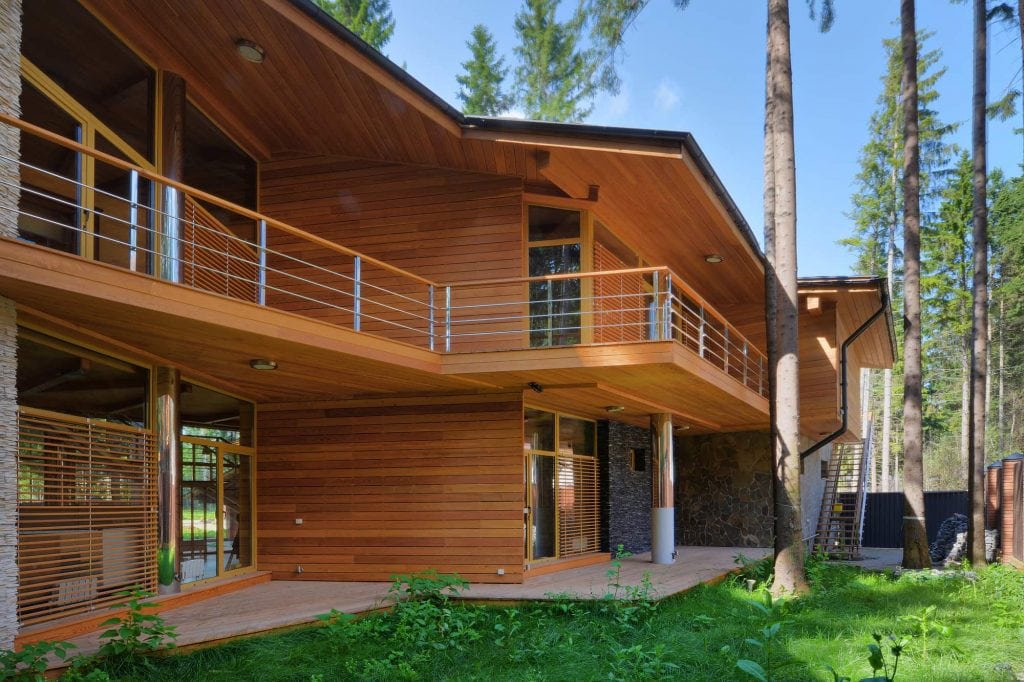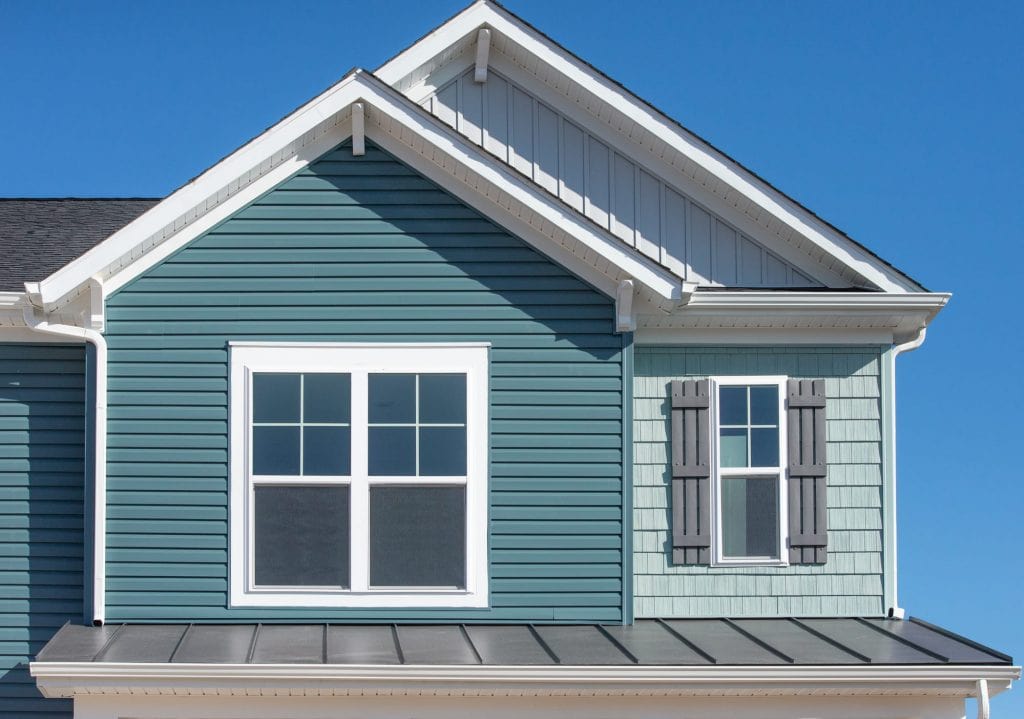James Hardie Industries has been a pioneer in the world of home exteriors, providing an array of durable, aesthetic siding products for residential properties. Many consider Hardie board siding a viable option as homeowners increasingly search for ways to enhance curb appeal and boost their homes’ value.
Let’s delve into its strengths and potential drawbacks to help you determine whether this type of siding suits your property. Make sure to visit eXp Realty for a closer look at available properties that feature this popular siding.
Pros of Hardie Board Siding
Hardie board, a type of fiber cement siding, is becoming an increasingly popular choice among homeowners and siding contractors. Let’s explore the reasons for this growing trend.
Durability and Longevity
Hardie board siding offers an exceptional blend of durability and longevity. This siding is engineered for climate, designed to withstand extreme temperatures, inclement weather, and harsh weather conditions.
James Hardie board’s makeup —a mixture of cement, wood pulp, and fibers—gives it remarkable resistance to rain, wind, and hail. Plus, it’s non-combustible and fire-resistant.
Low Maintenance
A major selling point of Hardie board siding is its minimal upkeep. Hardie board is resistant to rot, insects such as carpenter ants, and other pests, unlike other siding materials like vinyl or aluminum.
Versatility in Design and Style
Hardie board siding boasts a wide variety of styles and design options. Its versatility is part of what makes it a popular house siding choice among homeowners. Homeowners can easily find a Hardie board that suits their unique taste and architectural style with a wide range of colors, including Boothbay Blue and Deep Ocean, and dozens of textures from smooth finish to cedar texture.
Cons of Hardie Board Siding
While Hardie board siding offers numerous benefits, it is also essential to consider potential drawbacks. Here are a few points that might give homeowners pause.
Cost
One of the main considerations for many homeowners is cost. Hardie board siding can present a higher initial investment than other siding options like vinyl. Moreover, additional expenses may be incurred for customization and installation. However, considering the longevity and durability of the Hardie board, the initial cost can be offset by long-term savings.
Installation Complexity
Unlike vinyl or aluminum siding, which is relatively straightforward, Hardie board siding requires professional installation by trained siding contractors. The installation process can be complex and time-consuming, largely due to the weight and composition of the fiber cement boards.
But while this may add to the initial cost, a professional siding contractor will ensure proper installation, reducing the risk of issues down the line. By engaging experienced professional contractors in this siding style, homeowners can ensure the siding project is completed correctly and to their satisfaction.
Susceptibility to Moisture-Related Issues
Hardie board siding can be susceptible to moisture penetration when improperly installed, which may lead to damage over time. Ensuring proper sealing and maintenance is crucial to prevent these potential issues.
However, with professional installation and regular upkeep, moisture-related problems can be effectively prevented. Regular inspections by a professional can help identify any potential issues early and address them before they escalate.
Limited Insulation Properties
Another potential drawback is that Hardie board siding provides less insulation than other types of siding materials. This could be a concern in colder climates like Minnesota, Alaska or North Dakota or for homeowners seeking to improve energy efficiency.
The solution is to consider adding an insulation layer during the siding installation process. This additional material can provide an enhanced thermal barrier, helping to keep your home warm in cold temperatures and cool during hot weather.
Comparisons to Other Siding Materials
As you ponder the best siding material for your property, comparing Hardie board siding with other popular alternatives, such as vinyl siding, wood siding, and fiber cement siding from different brands, is helpful.
Vinyl Siding
Vinyl siding, made from polyvinyl chloride (PVC), is a plastic material that offers a low-cost, low-maintenance siding option.

Pros of Vinyl Siding
- Cost-efficiency: Vinyl siding tends to be less expensive than Hardie board in terms of material costs and installation. The initial cost savings can be appealing to homeowners on a tight budget.
- Ease of installation: The lightweight nature of vinyl siding makes the installation process easier and faster compared to the heavier Hardie board.
- Wide variety: Like Hardie board, vinyl siding is available in various color options and styles, allowing homeowners to customize their exteriors to suit their preferences.
Cons of Vinyl Siding
- Durability: Vinyl siding is less durable than Hardie board. It can warp or crack under extreme temperatures and is prone to weather damage from harsh weather conditions like hail.
- Environmental impact: Vinyl siding is less environmentally friendly than Hardie board siding, made from sustainable materials. When damaged, vinyl siding often ends up in landfills and is not easily recyclable.
- Lower resale value: Homes with vinyl siding typically have a lower resale value than those with Hardie board siding.
Wood Siding
Real wood siding is traditional, offering a natural, timeless look. However, it comes with its own set of advantages and drawbacks when compared to Hardie board siding.

Pros of Wood Siding
- Natural beauty: Real wood siding offers a warm, natural look that many homeowners appreciate. Its deep textures and clean lines can enhance the architectural style of a home.
- Custom color: Wood siding can be stained or painted in any color, providing various design options.
Cons of Wood Siding
- Maintenance costs: Wood siding requires regular maintenance to prevent moisture damage, rot, and insect infestation, unlike Hardie board, which is resistant to these issues.
- Higher cost: The material and installation cost of wood siding is typically higher than that of Hardie board.
- Susceptible to weather: Wood siding could fare better under harsh weather conditions, requiring frequent repairs or replacement.
Fiber Cement Siding From Other Brands
Other brands also offer fiber cement siding products, and while these share some commonalities with Hardie board, differences exist.

Pros of Other Brands’ Fiber Cement Siding
- Cost: Some brands may offer fiber cement siding at a lower cost than James Hardie’s products.
- Variety: Similar to Hardie board siding, other brands’ fiber cement products come in various styles and color options.
Cons of Other Brands’ Fiber Cement Siding
- Durability: Not all fiber cement products are created equal. James Hardie’s Hardie board has a strong reputation for being exceptionally durable and long-lasting, and not all brands may match up to this standard.
- Warranty: James Hardie offers a 30-year warranty on their Hardie board siding. Other brands may not provide the same level of warranty, affecting the long-term value of your investment.
Comparisons to Other Siding Materials
When considering Hardie board for your home, comparing it to other popular siding materials is beneficial. Each type of siding has its unique advantages and disadvantages, and what works best will depend on your home’s specific needs and personal preferences.
Vinyl Siding
Vinyl siding is popular due to its affordability and easy installation. It comes in various colors and styles and is resistant to insects and rot. However, it’s not as durable as a Hardie board siding.
Vinyl can become brittle and crack in extreme weather conditions and is susceptible to damage from impacts. Additionally, it doesn’t offer the same authentic look as Hardie board, which can mimic the appearance of natural wood more closely.
Wood Siding
Many homeowners love real wood siding for its natural beauty and classic appeal. However, it requires significant maintenance to protect it from moisture damage, insect infestations, and rot.
Over time, wood siding can warp or split, requiring replacement. Hardie board is more resistant to these issues, requires less maintenance, and still provides the appealing look of real wood.
Fiber Cement Siding From Other Brands
Hardie board is a type of fiber cement siding, and while there are other brands on the market, James Hardie’s products stand out for their quality and durability. Some fiber cement products from other brands may not be engineered for climate, a key feature of Hardie board.
Key Takeaways
When choosing siding for your home, weighing each option’s pros and cons is essential. Hardie board siding offers exceptional durability, low maintenance, and versatility in design, making it a worthwhile investment for many homeowners. However, it does come with a higher upfront cost and requires professional installation.
If you’re ready to explore the possibilities for your home, contact a local eXp agent today. They can provide more information and help you decide about your siding project. And if you’re looking to buy a new property, do a custom home search and sign up to get alerts of new property listings when they come on the market.
Frequently Asked Questions: James Hardie Board Siding
Here are answers to some of the most common questions about James Hardie board siding.
How much does a 2000-square-foot house cost to Hardie?
The average cost of Hardie board siding can range from $10 to $12 per square foot, including labor costs. For a 2000-square-foot house, you can expect to pay between $20,000 and $24,000.
Is Hardie siding worth the money?
Many homeowners find Hardie board siding worth the initial investment due to its durability, low maintenance requirements, and aesthetic appeal. It can also add to the resale value of your home.
What is the life expectancy of James Hardie board siding?
Hardie board siding is known for its longevity and comes with a 30-year, limited transferable warranty. With proper installation and maintenance, it can last for decades.
Is Hardie board waterproof or water-resistant?
Hardie board is water-resistant, but it is not entirely waterproof. Proper installation and maintenance are crucial to preventing water penetration and subsequent damage.
Does Hardie board increase the value of a home?
Hardie board siding can increase your home’s value due to its durability, curb appeal, and low maintenance requirements.
Is Hardie cheaper than wood siding?
Generally, Hardie board siding is more expensive than low-cost wood siding but can be cheaper than high-end wood siding. However, Hardie board siding requires less maintenance than wood siding, which can result in cost savings over time.
Does the Hardie board siding need to be painted?
Hardie board comes pre-painted, and the finish can last up to 15 years. However, you can repaint Hardie board siding if you want to change the color.
Do you need insulation under Hardie siding?
Adding insulation under Hardie siding can improve energy efficiency, but it’s not mandatory. You should discuss this with your siding contractor.
Does the Hardie board siding need maintenance?
While Hardie board is low maintenance compared to other siding options, it does require some upkeep. This generally includes regular cleaning and inspections to ensure the siding remains in good condition.





